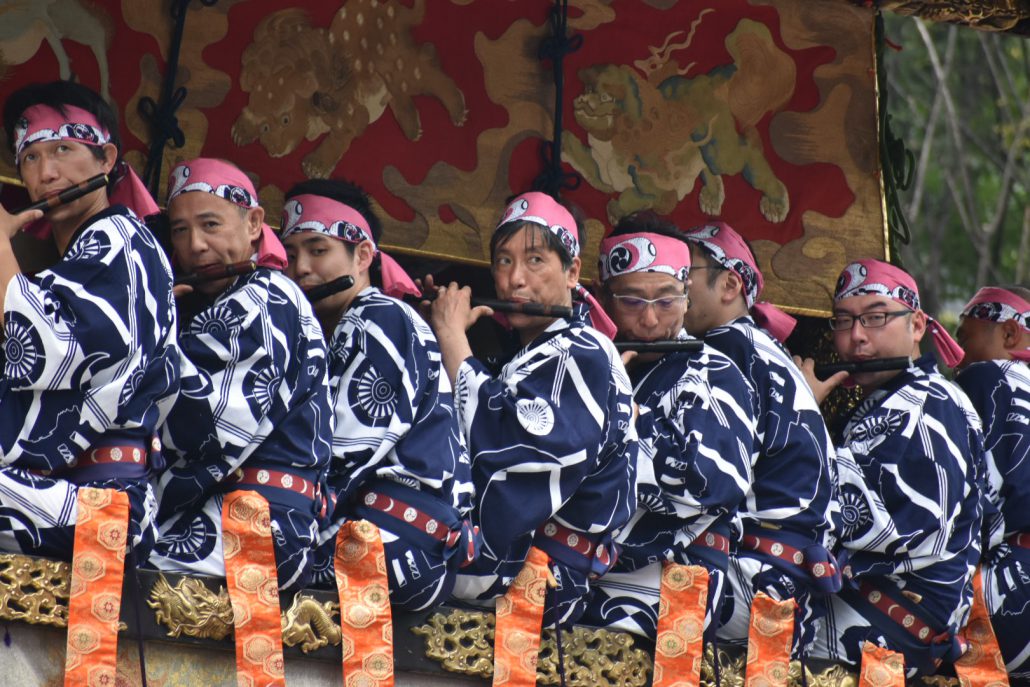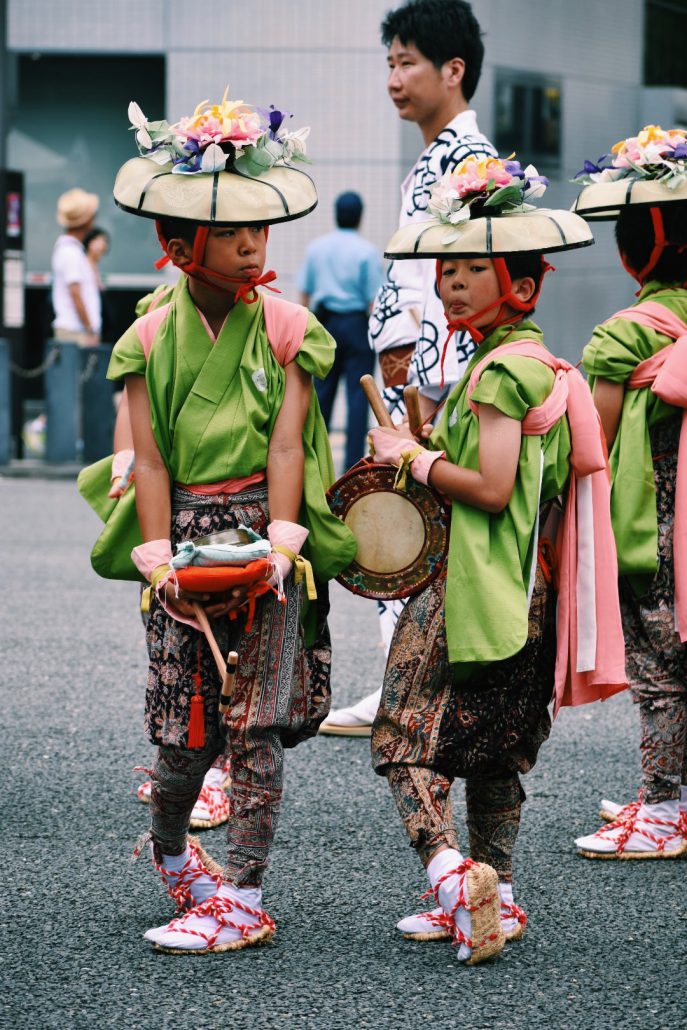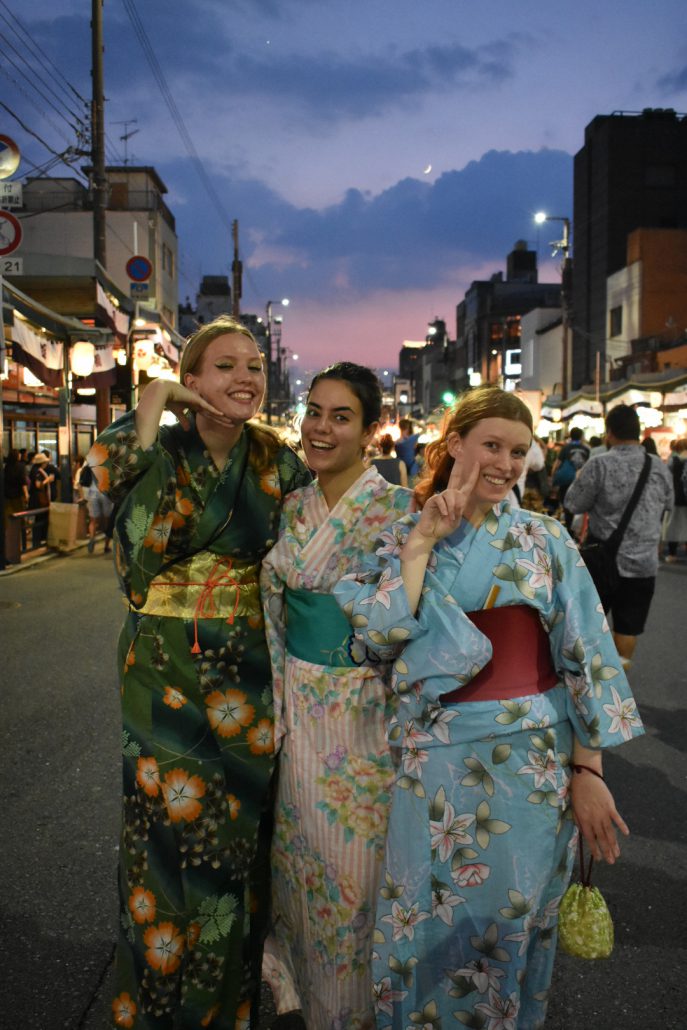BY MACKENZIE LORKIS
This week was one of the biggest festivals in Japan: Gion Matsuri! Gion Matsuri began in 869 AD, making it almost 1,150 years old. Originally, the festival began as a way to purify the Kyoto populace from plague. Since then, it’s become less about worship and more of a fun way to celebrate Japanese culture. The main event of the matsuri is always on July 17th, though it is preceded by three nights of festive street fairs called yoi-yama. In addition, there are smaller events throughout the entire month of July.

The biggest part of the festival officially began on Saturday (yoi-yoi-yoi-yama), but unfortunately I couldn’t go. On Sunday (yoi-yoi-yama), my friends and I walked around the smaller area of the festival closer to Yasaka Shrine and Gion. Considering the weather was SO hot this year, it was so nice to be able to be in a less crowded part of Kyoto. We walked around the streets, taking in the festive atmosphere, and came across a huge area on the street where you could meet maiko (training geisha)! For a very small fee, we got to meet and take photos with maiko- considering they are generally extremely elusive, this was an incredible opportunity.

The next day, we enjoyed the main part of the party happening in the Shijo area. There were hundreds of street food stalls, and although we couldn’t try everything, we made a valiant effort. From traditional ikayaki to juice served in baby bottles and light bulbs, you can really see the extent of Japanese street food culture. For children, there were tons of games like darts and goldfish catching that bring to mind street fairs from many American childhoods.

Aside from the delicious food, there’s so much more to see at the yoi-yama. Most young women and children dress up in traditional yukata for the festival, showing off colorful and unique patterns. Aside from floral patterns, we saw some goldfish, rainbow, and even Disney yukata! The floats used in the parade are also displayed around the streets at night; with their lanterns lit up, they are even more beautiful than during the day. A few of the floats can be explored and boarded; for a top view of the streets, my friend and I decided to go in. And, just as we did, so did all the musicians!

After all the fun, there was still more to the festival! On July 17th, my class went together with our sensei and some Japanese students to watch the procession. There are two kinds of floats: yama and hoko. Yama style floats are much larger, and are topped by long poles increasing their heights even more. Hoko floats, though less grand, are just as beautiful, often topped with scenes from famous Noh plays. Many of the floats are decorated with gorgeous Turkish rugs from the Kyotobased Nishijin textile company. In total, the parade runs from around 9am-3pm; we arrived at its midway point, and it took around an hour and a half to see all of the floats.


Mackenzie Lorkis studied in Kyoto, Japan in the Language & Culture, Doshisha Univ. Program – Spring 2018



